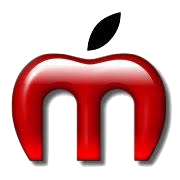- Why You Can’t Completely Eliminate Spam
- How to Safely Unsubscribe From Junk Email
- How Spammers Track Email Opens
- How Major Email Apps Protect Your Privacy
- Tips to Further Reduce Spam and Avoid Scams
- How to Report Spam Emails
- Using Secondary or Alias Email Addresses
- How to Block a Sender
- Why Spam Still Gets Through
- Summary: Combining Spam Filters with Smart Email Habits
Are you overwhelmed by a cluttered inbox filled with junk email? You’re not alone. Spam messages are one of the biggest frustrations for email users, but the good news is you can take control. In this guide, we’ll show you proven ways to reduce junk email, block spam messages, and keep your inbox clean. Whether you use Apple Mail, Gmail, Outlook, or another email provider, these simple steps will help you stay organized and protect your personal information from unwanted senders.
Why You Can’t Completely Eliminate Spam
How Spam Filters Work
Spam filters, like the Apple Mail, Gmail, and Outlook spam filters, are built into email services to keep your inbox safer. They detect suspicious emails and move them to junk or spam folders automatically.
Why Some Junk Emails Still Get Through
No spam filter is perfect because spammers constantly evolve their tactics. However, you can significantly reduce junk email by combining filters with smart email security habits, such as marking unwanted messages as spam and safeguarding your email address.
How to Safely Unsubscribe From Junk Email
Recognizing Legitimate Senders
It’s safe to click unsubscribe only if the email comes from a recognized source, such as a store, service, or newsletter. Legitimate companies are required by law (like the CAN-SPAM Act) to remove you from mailing lists when you unsubscribe.
Avoiding Fake Unsubscribe Links
Never click unsubscribe links in obvious spam. Fake links confirm your email is active, creating more junk mail.
Rule of thumb:
- Recognizable sender = safe to unsubscribe.
- Unknown sender = mark as spam, don’t click unsubscribe.
How Spammers Track Email Opens
Tracking Pixels and Invisible Images
Spammers sometimes use tracking pixels (often 1×1 pixel, invisible to the eye) to see if you opened an email – even in preview mode, but only if they are allowed to load.
How Preview Modes Affect Tracking
Modern apps like Apple Mail, Gmail, and Outlook prevent tracking by preloading images through their mail servers, hiding your IP address.
How Major Email Apps Protect Your Privacy
Apple Mail Spam and Privacy Protection
Starting with iOS 15, iPadOS 15, and macOS Monterey, Apple Mail uses Mail Privacy Protection to block senders from tracking email opens.
Gmail Spam and Tracking Protection
Gmail routes image requests through Google servers, hiding your location. Senders may see an email as opened but cannot track your device.
Outlook Spam Blocking Features
Outlook blocks automatic image loading by default, limiting tracking.
Tips to Further Reduce Spam and Avoid Scams
Never Click Suspicious Links or Attachments
Links or attachments may install malware or steal information. Always visit company websites directly.
Verify the Sender’s Email Address
Check for look-alike domains (e.g., “paypa1.com” instead of “paypal.com”).
- On a computer hover over links to see the real URL and confirm the sender’s domain.
- On a mobile device long-press opens a quick preview showing the expanded URL.
Enable Two-Factor Authentication (2FA)
Two-factor authentication (2FA) adds an extra layer of security to your accounts by requiring a second verification step, usually a code sent to your phone or generated by an app. This protects your accounts even if a password is stolen.
Enable 2FA on an Apple Account
On iPhone / iPad:
- Open the Settings app and tap [Your Name].
- Tap Sign-In & Security.
- Tap Two-Factor Authentication.
- Enter a trusted phone number (the number you’ll use to receive verification codes), then tap Next. A verification code is sent to your trusted phone number.
- Enter the verification code on your iPhone.
On Mac:
- Click the Apple logo () in the upper-left corner of your screen.
- Click System Settings and click [Your Name].
- Click Sign-In & Security, then Turn on Two-Factor Authentication.
- If prompted, enter your Apple Account password, then click Sign in.
- Answer your security questions, then click Continue.
- Enter your trusted phone number for verification, select a verification method, then click Continue.
- When asked, verify your identity with the six-digit verification code sent to your trusted phone number.
You won’t be asked for a verification code again on your Mac unless you sign out of your Apple Account completely, erase your Mac, or need to change your password for security reasons.
Enable 2FA on a Gmail / Google Account
- Open a web browser and go to Google Account Security.
- Log into your Google account.
- Under Signing in to Google, select 2-Step Verification and follow the prompts.
- Choose your second factor: text message, Google Authenticator app, or security key.
Enable 2FA on a Microsoft / Outlook Account
- Open a web browser and go to Microsoft Account Security.
- Log into your Microsoft account.
- Under Two-step verification, click Set up two-step verification and follow instructions.
General 2FA Tips
- Use an authenticator app, like Apple Passwords, Google Authenticator, Authy, or Microsoft Authenticator, to generate and store Time-based One-Time Password (TOTP) codes instead of receiving texts if possible – it’s more secure.
- Download and keep 2FA backup codes in a safe place in case you lose access to your device.
How to Report Spam Emails
Reporting spam helps improve filters and protects your inbox. Most email providers let you mark messages as phishing to improve their filters.
Reporting in Apple Mail
Forward spam emails to abuse@icloud.com, then move them to Junk.
Reporting in Gmail
Open the email, click or tap the three-dot menu and select Report spam or Report phishing
Reporting in Outlook
Mark the message as Junk or select Report Message > Phishing.
These email services automatically delete messages moved to junk, spam and phishing boxes after 30 days, but manually clearing them ensures your inbox stays clean and reduces storage use.
Reporting to Federal Agencies
You can also report spam and phishing emails to official authorities:
- Federal Trade Commission (FTC): Forward spam emails to spam@uce.gov.
- Phishing emails: Forward to phishing-report@us-cert.gov or reportphishing@apwg.org.
Using Secondary or Alias Email Addresses
When you sign up for newsletters, promotions, or online shopping, it’s smart to use a secondary email address or an alias email address instead of your main one. This keeps your primary email inbox more secure and organized, reduces clutter, and makes it easier to spot spam. Using alias or secondary emails also helps you identify which companies may be sharing or selling your email address.
How to Create Aliases in Apple Mail / iCloud
- Open a web browser and sign into iCloud.com.
- Click or tap Mail, then the gear icon, in the upper left corner.
- Select Settings, then Accounts.
- Click or tap Add alias.
- In the New Alias Address window create an email address, choose a label, and enter your full name.
Emails sent to aliases arrive in your main inbox. You can have up to three aliases and delete and create new ones, after a waiting period, to suit your sign-up and shopping needs.
How to Use Gmail “+” Tags or Separate Accounts
- Add a “+” tag to your existing Gmail address. (For example, yourname+newsletters@gmail.com still goes to yourname@gmail.com), or
- Create a separate Gmail accounts for shopping, newsletters, etc.
How to Set Up Aliases in Outlook / Microsoft 365
- Open a web browser and sign into outlook.com.
- Click or tap Settings.
- Select View all Outlook settings.
- Select Email.
- Select Sync email.
- Select Email aliases.
- Click Add alias, then choose a new email address, and link it to your existing account.
How to Block a Sender
Most email services let you block specific senders:
Blocking in Apple Mail
On iPhone / iPad:
- Open the email that has the contact that you want to block.
- Tap the contact name, at the top.
- Tap View Contact Card.
- Tap Block this Contact.
On Mac:
- Move the pointer just to the right of the sender’s name in the message header.
- Click the down arrow.
- Choose Block Sender.
Blocking in Gmail
- Open the email.
- Click the three-dot menu.
- Select Block [Sender].
Blocking in Outlook
- Open the email.
- Select Junk.
- Select Block Sender.
Why Spam Still Gets Through
Evolving Spam Tactics
Spammers constantly find ways to bypass filters.
Importance of Marking Spam Regularly
Regularly mark unwanted emails as spam to train filters and reduce junk email.
Summary: Combining Spam Filters with Smart Email Habits
Key Takeaways for a Cleaner Inbox
- Use built-in spam filters in Apple Mail, Gmail, and Outlook.
- Safely unsubscribe from legitimate sources.
- Never click unsubscribe links in obvious spam.
- Enable Two-Factor Authentication and strong passwords.
- Report spam and phishing messages.
- Use secondary or alias email addresses for online sign-ups.
Recommended Practices for Long-Term Email Safety
By combining robust spam filters with smart email security habits, you can significantly reduce spam emails, protect personal information, and maintain a cleaner, safer inbox.


